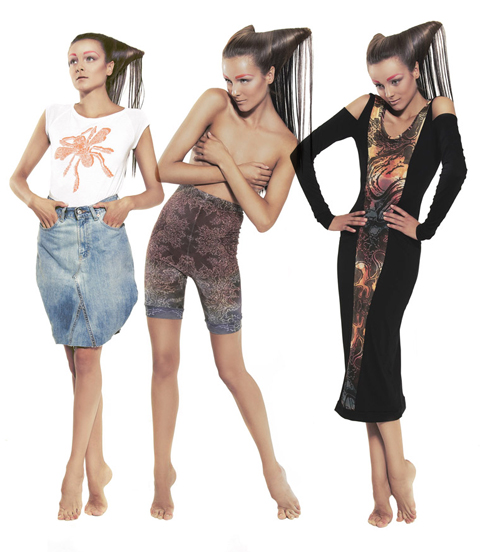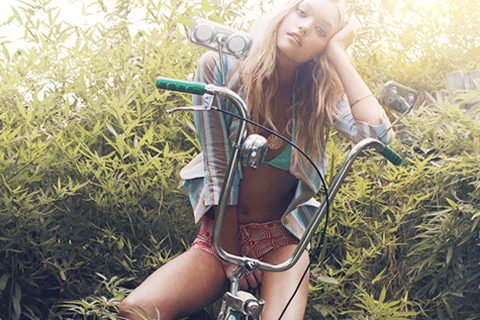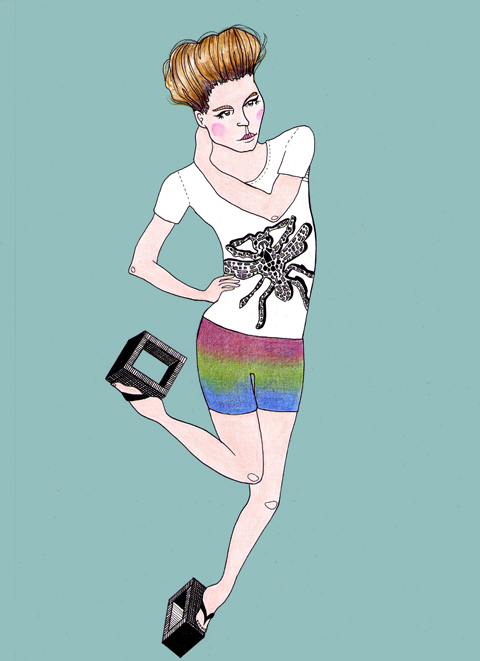
ADZ, capsule drug illustrated by Jess Stokes
Whilst eco-couture has always been ahead of the times in terms of sustainability, click it’s often been left behind in the style stakes, unable to compete with mainstream, high fashion. Gradually though, a new breed of designer has emerged who is equally concerned with creating a cutting edge aesthetic as they are utilising sustainable and organic materials.
At the forefront of this movement is Ada Zanditon, whose designs experiment with shape and texture in a way that is unsurprising once you learn that she originally interned with Alexander McQueen and Gareth Pugh. After establishing her own eco-luxury womenswear line in March 2008, Ada has gone on to raise awareness of everything from eco fashion to politics through the likes of the Think Act Vote campaign. Ada took the time to answer a few questions for us about the inspiration behind her new range ADZ, and the future of eco fashion. ?
You’ve really established yourself as a pioneer of eco-fashion, giving the movement a younger, sexier image than it had in the past. How did you go about this?
I think that I had two very strong passions that I was determined to make work together – fashion and sustainability. I enjoy the innovative aspect that comes into every part of the process, my main how-to part of it I think comes from a basic viewpoint that anything is possible. It’s equally possible to make a beautiful fashionable dress from an ecological material as it is from one that is not. It’s equally possible to create fashion that considers its full life span and even decay as it is to create something that does not. It’s a question of awareness, choice and aesthetics.
Tell us about your new collection, ADZ?
ADZ by Ada Zanditon is the bridging line to my main collection, it’s contemporary, resort urban wear that combines strikingly unique prints with casual yet sophisticated pieces that are focussed around bold geometric detailing in fluid soft fabrics such as tencel, silk jersey and chiffon. The SS 2011 debut collection of ADZ is titled Nebulayan. My inspiration came from creating illustrations of satellite images of the Himalayas mountain range which I then layered with Hubble telescope imagery of deep space nebulae. We now have achieved the technology to see the Earth from space and also to see deep into outer space. I like the idea of contrasting these perspectives with each other.

ADZ, illustrated by Aniela Murphy
How do you cope with the volume of work and your nerves in the build up to London Fashion Week? Any trade secrets?
I am always aware that I am so fortunate to be in the position to be running my own label, I don’t really want to complain. Everyday always has its challenges, but I try to see that as opportunity. I think gratitude is vastly underrated these days…. don’t you?
Absolutely! Amelia’s magazine have always been a big fan of your illustrations, any plans to design your own prints based on your work?
Actually, all my prints are based on my illustration work and photography and as well as that I use watercolour then layer all these elements together. ?
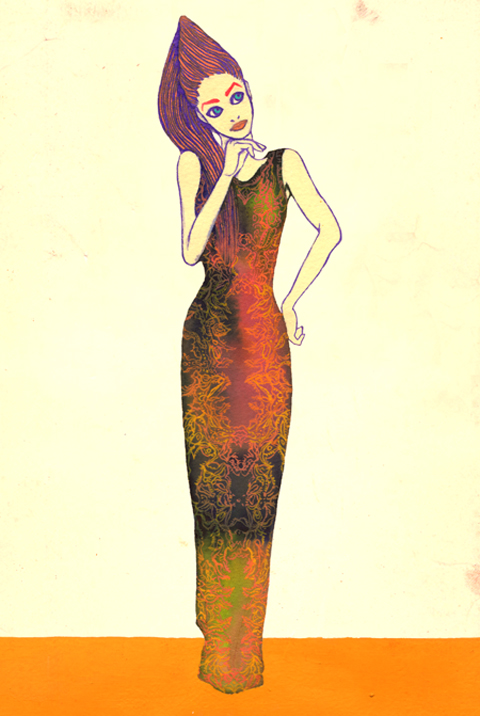
ADZ, illustrated by Natsuki Otani
Musician Viktoria Modesta is your muse; how did you end up working together? You’ll be contributing to her showcase next month; what will that involve?
Soon after we first met we found we had a good creative rapport. I think Viktoria has incredible elegance and style with a real sense of grace. As for the showcase – I don’t want to give to much away but it will be a great evening.
How do you think the public can be convinced of the importance of sustainability? Do you think there is more designers, magazine editors and celebrities could be doing to highlight its significance?
I only think the planet can truly convince people of the importance of sustainability. I’m sure most people living on the coast of Bangladesh are highly convinced that we need to live in a more sustainable way as they are effected daily by climate change. However, I think that people can encourage and inspire, and have a really good try at convincing. What worries me, though, is that catastrophic events only really shake people into action. I think everyone in every walk of life can do more, no matter what you do.
To see the entire ADZ S/S 2011 collection, visit Ada’s website.
To read more about Think Act Vote, see our interview with Amisha Ghadiali here.
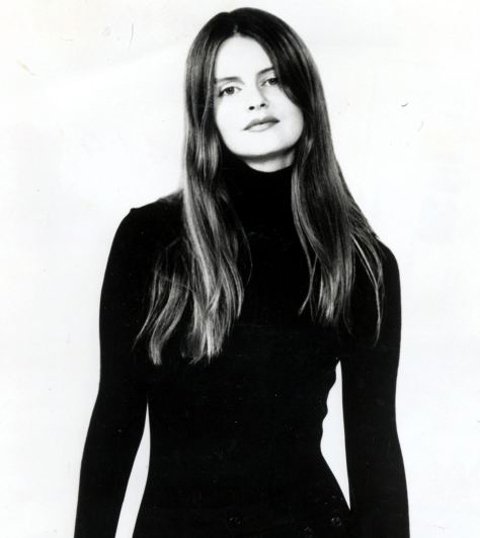
Corrine Day pictured in 1996
The fashion world is in mourning over the loss of another of its brightest stars. Corinne Day, decease the fashion photographer known for shooting Kate Moss at the beginning of her career, information pills has died aged 45.
Her documentary-style photography shook up the fashion world in the nineties, mind at a time when the industry was looking for an antidote to the gloss and glamour of the eighties.
Born in Ickenham, west London, Day she was raised by her grandmother (her mother, she said, ran a brothel, and her father was not in the picture), and after failing school, worked as a courier. A chance meeting with a photographer led to a short-lived modeling career – Corinne knew she was no cover girl – but through it she met her lifetime partner Mark Szaszy, who taught her how to use a camera.
It was behind the lens that Corinne shone, and whilst modeling in Milan, she started snapping ‘what she knew’ – her friends – teenage models, hanging around cramped, dingy flats, dressed in charity shop finds.
This was before the age of street style or fashion bloggers, where anyone with a camera and a passport could jet set around the world, snapping chic from the sidewalks. Her subversive shots caught the eye of Phil Bicker, then art director of The Face, who commissioned a shoot that was to become the stuff of fashion legend.
The story of Corinne and Kate is well-documented. Day saw promise in a polaroid of the wannabe model, just 16. The ‘3rd Summer of Love’ in July 1990, saw Kate frolicking on a beach in Camber Sands, dressed in a mismatch of high-end designer and cheap market finds. The shoot caused a sensation. The two became firm friends, sharing a flat for three years – this closeness was something Corinne shared with many of her subjects, enabling her to capture them at their most natural.
Shoots for Vogue followed – (Day was the first to shoot Kate for one of her countless Vogue covers) with Corinne teaming up the stylist Melanie Ward to create the now infamous ‘waif’ look. Her ‘Underexposed’ sequence saw Kate Moss languishing in a bedsit festooned with fairy lights, skinny in saggy tights, creating outrage in the national press for encouraging anorexia and heroin use.
But nothing could stop Day’s rise to stardom. Her stark, fearlessly honest photographs welcomed in a new mood suited to a country recovering from a recession.
After a decade of supermodels with their Amazonian bodies and diva demands, Day’s idea of perfection was imperfection. She hated retouching photographs, and favoured quirky models with only traces of makeup, exposed to natural light. Her shots of street kids in second-hand clothes summed up the anti-glamour aesthetic of Generation X. It was an answer to Seattle’s grunge movement – but uniquely British, and effortlessly cool.
Influenced by the work of documentary artists like Nan Goldin, she sought to capture people’s “most intimate moments”, when “we’re not having such a good time”. This extended to her own life, when she was diagnosed with a brain tumour in 1996, and asked her partner to photograph her battling with the illness. The result was published as ‘Diary’ in 2001.
After recovering from her first bout of illness, Corinne continued to shoot for fashion magazines, as well as documenting her own friends and family. Her work was commissioned by the National Portrait Gallery, exhibited everywhere from the V&A to the Saatchi, and even the subject of a BBC Four documentary.
Corinne will always be known as the girl who kick-started heroin chic, but her legacy will be something greater. Writing in The Telegraph, stylist Belinda White commented how, growing up as a working class girl, she “had no business” looking at Vogue and “couldn’t relate” to the stories on the magazine pages. The Kate Moss shoot made her “stop in her tracks” and realize that for the first time, normal girls ‘like her’ could be a part of this world.
Corinne Day’s photographs democratized fashion, and made it ‘real’ and relevant to a girl on the street. Only under her guise could Kate Moss, a short, flat-chested girl from Croydon, rise up the echelons of the fashion world.
All images © Corinne Day
Categories ,3rd Summer of Love, ,Amazonian, ,Britain, ,Camber Sands, ,corinne day, ,Croydon, ,fashion, ,Generation X, ,grunge, ,Ickenham, ,Kate Moss, ,london, ,Mark Szaszy, ,Melanie Ward, ,Milan, ,Nan Goldin, ,national portrait gallery, ,Obituary, ,Phil Bicker, ,photography, ,Saatchi Gallery, ,seattle, ,The Face, ,Underexposed, ,va, ,vogue
Similar Posts:
- James Small: London Fashion Week A/W 2012 Menswear Catwalk Review
- London Fashion Week S/S 2012 Menswear Day Catwalk Review: James Small
- London Fashion Week S/S 2011: What is everybody wearing?!
- Fashion in the Mirror: Self-Reflection in Fashion Photography
- Spotlight: Matteo Patocchi

